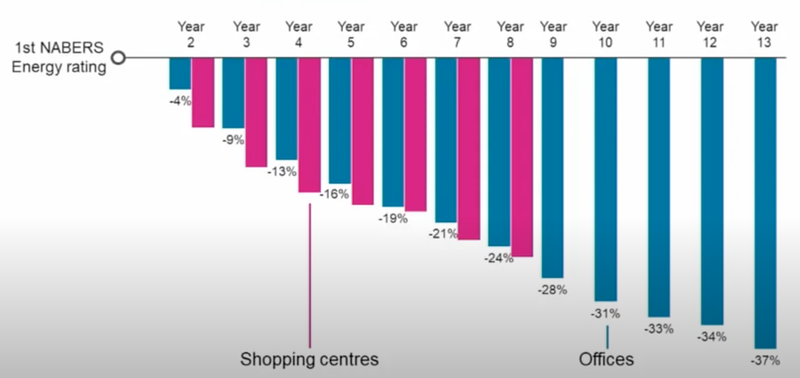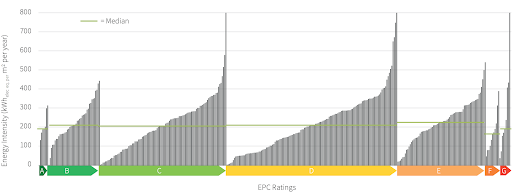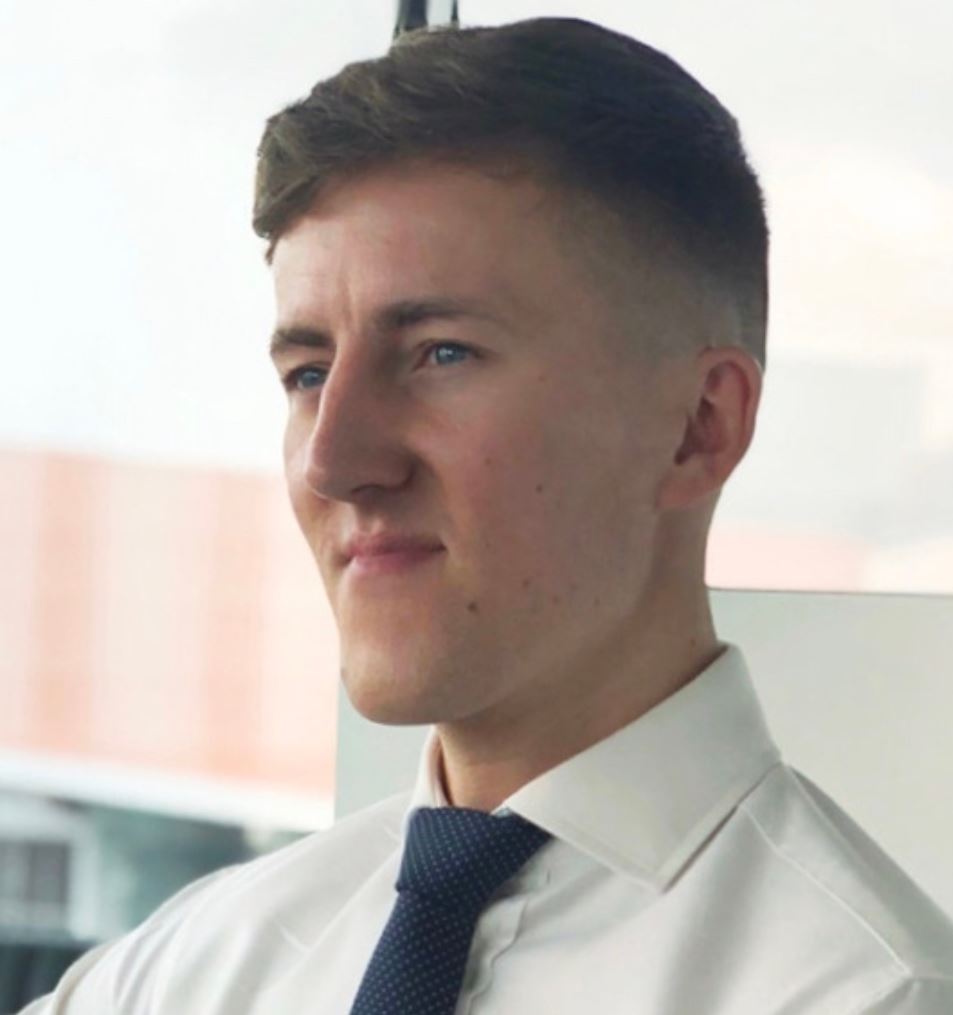
How NABERS UK is About to Change the Way We Define Sustainability in Real Estate
Last month, the BBP - whom we have been working with since 2016 (https://fabriq.space/blog/better-buildings-partnership-reebooted/) - officially announced its partnership with NABERS to bring their incredibly successful building performance rating standard to the UK. Currently operating in Australia and New Zealand, NABERS comes with a proven track record of bridging the performance gap between building design and in-use operational energy consumption.
NABERS energy ratings measure and verify the actual energy use of existing buildings, providing a rating from 1-6 stars and helping building owners to accurately target, measure and communicate the energy performance of their buildings
With almost 20 years of experience in the Australian market, NABERS is well renowned for its ''no bullshit'' approach to measuring energy efficiency. The system is intended to assess actual impact rather than intent, be relevant to building operations and most importantly, easy to understand.
There are a few key points that set NABERS apart from the current building performance rating standards on offer in the UK. Firstly, they haven’t overlooked the complexity of benchmarking buildings and have taken a ‘one sector at a time’ approach. There is an endless list of variables that can influence building performance which makes it hard to find any meaning in generic good/typical benchmark categories covering every building type.
NABERS began with commercial offices and restricted themselves to this sector for about 5 years until they knew it inside out. Following that, they introduced shopping centres and intend to take on many more sectors in the future. It’s clear that they appreciate the need to fully understand a sector before being able to accurately measure building performance. This is demonstrated with nuances such as splitting the NABERS score by main building services and tenant operated areas.
What we like even more are the results. Because at the end of the day, that’s all that matters. When I first saw the figures of around 30-40% reduction in operational energy consumption I instinctively assumed they’d cherry picked the best cases. It turns out this is the NABERS average across the long list of buildings that have signed up to the standard. Incredible.
The image below is taken from the NABERS + CBD 2020 Conference and shows that on average a building reduces its energy consumption by 37% by year 13. What’s most impressive is the rate of continual improvement. Incremental gains are demonstrated year on year with shopping centres trending even higher than offices.

The results are a huge achievement and you very rarely see a reduction that substantial at a single building, let alone across entire portfolios. But in many ways it’s not surprising. If anything, it’s simply proven the assumption I’ve held for many years; that the vast majority of buildings are operated incredibly inefficiently with the potential for improvement being continually overlooked.
I really don’t want to take anything away from NABERS but in many ways their solution is pretty straight forward (which is probably why it’s been so effective!).They haven’t developed some sort of cutting edge technology that’s running behind the scenes. There’s no AI powered machine learning algorithm developed by NASA. It’s just an exceptionally good example of applying the fundamental principles of data driven energy efficiency and obsessing about driving positive change.
A Culture of Compliance
Whether it be for buildings, business or education, the basis of an effective incentive scheme is to reward the correct behaviours. The failing of the current building performance rating standards in the UK is they have bred a culture of compliance.
A building’s energy performance rating is quickly becoming one of the most important factors for commercial real estate investors. Meaning it’s even more crucial to make sure we are rewarding the correct behaviours that lead to the outcome we want.
The installation of air source heat pumps or solar PV panels won’t do anything for rising global temperatures. We need to ensure they are being operated and maintained as intended and having the desired impact, which will of course be reflected in the operational energy consumption.
The beauty of rewarding the correct behaviour is it doesn’t matter what the underlying drivers are if the means of getting there is the same. With NABERS it doesn’t matter if you want to save the planet, you can’t stand waste, you want to increase asset value or you just like collecting gold stars. The only way to improve your rating is to decrease operational energy usage which means everyone is a winner.
The Performance Gap
Standards such as BREEAM, LEED and the more common Energy Performance Certificates (EPCs) revolve around the physical makeup of a building or asset. BREEAM and LEED ensure a building is designed with energy efficiency in mind, but they do very little to ensure the expected in-use energy consumption becomes a reality. There’s nothing wrong with these standards themselves, there’s just something missing.
Take EPCs for example. The surveys are carried out as a one off exercise with no consideration for actual energy consumption. On the basis of things like building fabric, boiler size and window glazing, we make assumptions on how energy efficiency a building will be.
The BBP recently published a visual that clearly demonstrates the insignificance of EPC ratings as an indication of operational energy performance.

As you can see, a building's EPC rating is a very poor indicator of energy performance when measured on a kWh/m2 basis. In fact, buildings with a rating of E and F have a lower energy intensity rating than those with a C or D.
The limitations of standards
As you can probably tell, I’m a big fan of what NABERS are doing and am excited about how this is going to shake things up in the UK. But let’s not kid ourselves. You don’t achieve 37% reductions over 13 years through a star rating system alone.
NABERS energy ratings do an excellent job of assessing performance and highlighting where there is room for improvement, which is often harder than it sounds. But to understand what changes can be made to improve your rating requires a much deeper understanding.
If a NABERS rating provides the ‘What’, you’ll need to find the ‘Why’. To achieve this you’ll need two things: access to high resolution (typically half hourly) consumption data and an analytics system or platform that allows you to make sense of all that data.
High resolution energy data in its raw form can be overwhelming so intuitive visualisations and tools to help you identify waste and find opportunities for improvement are critical. Another key component is being able to measure the impact of the initiatives you roll out across your buildings. There’s too much of a lag between each action you take and the next NABERS rating so ensuring you’re on track on a more frequent basis is very important.
Fabriq is the analytics platform for energy and sustainability professionals who are in the business of making buildings more efficient and improving their NABERS rating.
A fully hosted Software as a Service offering with a user interface that’s suitable for all levels of expertise. We’ve built integrations with a wide range of external data sources to provide you with the information you need to save time, money and CO2.
- Consolidate your data sources and improve the reliability of your energy data
- Create dashboards and share insights with stakeholders through automated reporting
- Detect outliers and manage issues through to resolution
- Identify opportunities to save energy and quantify the financial impact
- Comply with industry standards and improve your ESG performance
To hear more about how Fabriq can help you , get in touch!
And don't forget to sign up for our Sustainable CRE webinar on 17 December. It’s hosted by Fabriq’s Colin Ma and includes guest speaker Howard Pierce, a partner of a Spanish asset manager group, Urban Input.

